Open Studios
Our bi-annual Open Studios event is an opportunity for Emerging Media Arts students to share their innovative and groundbreaking work from each semester with their peers and the community. This event is held at the end of the Fall and Spring semesters and is open to the public. From motion capture performances to multimedia installations, video games to multimedia immersive experiences. You’ll see the most amazing work at this event!
Featured Projects | Spring 2025
“tryst” by Angelia Sur
My project tryst explores the ever-evolving relationship between humans and emerging technologies as they become more integrated into our daily lives. My robot is entirely operated by Arduino, something I never would have touched if not for one of our fundamental courses in EMA. Being in this program really changes your perspective of what art is and what it can be, opening doors for you to unlock your creative potential.
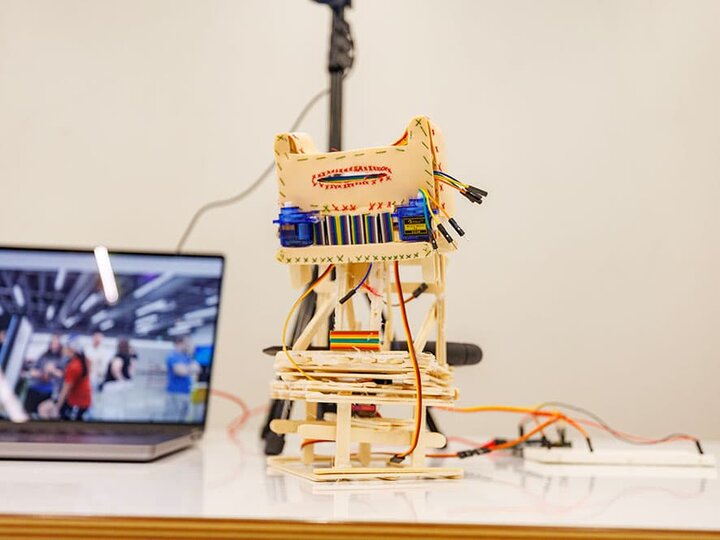
“Nesting” by Eleanor Benson, Alexah Fort, Emma Noack, Drew Carlson and Valentina Catalano
Nesting is a 3D animated short film that follows a curious pigeon navigating an unwelcoming environment in search of a comfy place to rest. The environments of Nesting are built with original 3D models, custom textures and animation, a lot of which was inspired by our experience observing pigeons in the cities we visited on our EMA study abroad trip to London.
Between 3D modeling, visual effects, animation and story construction, the project utilized all the skills of our EMA team. Professor Steve Kolbe mentored us through the entire process, giving us advice on the production pipeline while offering creative advice and helpful critiques.
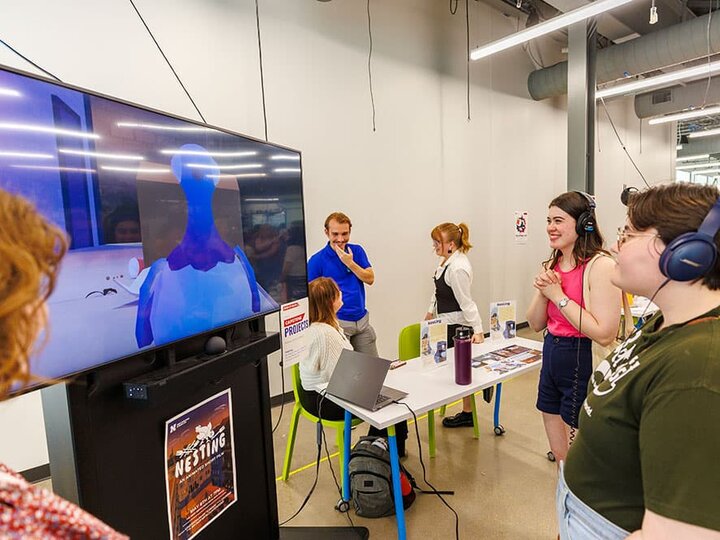
"VJ (Visual Jockey) Project" by Justine Huse
“VJ (Visual Jockey)” is an interactive visual performance built in p5.js and synced to the song “Crash” by Neovaii. Using over 40 keyboard inputs I coded individually, I triggered animations and visuals centering a yellow sports car racing, slowing and stopping, symbolizing the struggle to outrun emotions.
This performance was done live at Open Studios and relies completely on the VJ artist.
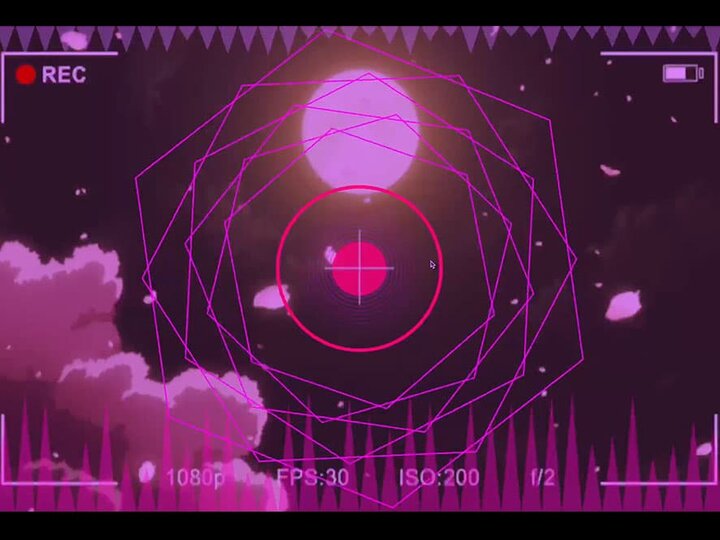
“Volleyball 360” by Megan Kolbe and Charlie Major
Our project is an interactive VR recruitment video for the Nebraska Volleyball team, inspired by work that our professor, Steve Kolbe, was doing with men's basketball, as well footage we gathered at Volleyball Day with 360o cameras. Our hope is that potential volleyball recruits gain an understanding of what it’s like to be part of UNL and its unique volleyball family.
Professor Steve Kolbe was a big help on this project, getting us connected with the right people and, along with Professor Rick Endacott, overseeing the post-production process and offering ideas during the editing process.
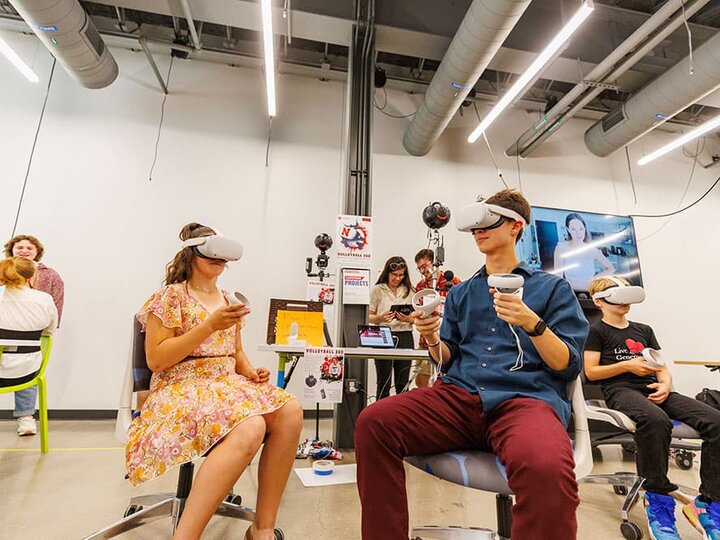
“A Series of Color Theories” by Grace Soma, Sophia Strong, Justine Huse and Jude Kroeze
A Series of Color Theories is a zine we developed as a group where each of us wrote an article on a different topic related to color. We wanted to build the zine around a topic that would be immediately recognizable and relevant to new artists but just niche enough that it felt original.
Our “Visual Expressions” class helped a lot, giving me a better sense of how to organize a layout and make things visually interesting without it being overwhelming. I’ve picked up a lot of graphic design experience through EMA in general, so it was cool to put all of that into practice with the zine.
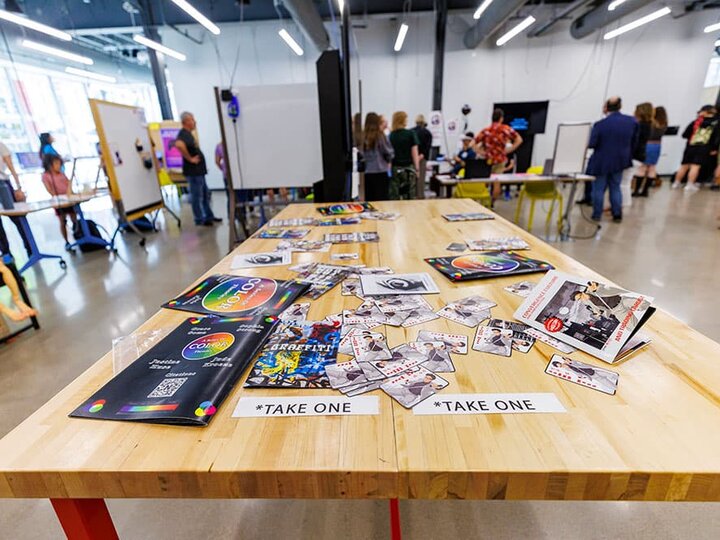
“Mossense: The Living Interface” by Owen Strazdaz, Annette Z.C. Foreman and Noah Trumble
Mossense: The Living Interface is an interactive bio-sensor installation that uses living moss to create a tactile, emotional connection between people and nature. We wanted to build a bridge between environmental awareness and digital interactivity in a way that feels alive, delicate and human.
EMA gave us the technical and conceptual tools to make this happen, applying skills in physical computing, creative coding and environmental sensing to build the system that allows the moss to “respond” when touched—changing light, sound or visuals depending on its condition and interaction. Professor Ash Elizabeth Smith, who led the Biodesign course, pushed us to go beyond a simple concept and prototype something that’s truly responsive and emotionally resonant.

"Starfarer" by Annette Z.C. Foreman, Hannah Gish, Christian Tietz and Wes Hill
In Starfarer, a VR game, players must gather stars to channel the powers of various mythological figures in constellations to solve puzzles and defeat the drakon. The project was inspired by my experiences camping, the aurora borealis and night sky viewing applications.
Understanding how to use the Unity gaming engine in tandem with Steam VR and Open XR was crucial to developing this project. EMA faculty helped facilitate the structure of each project and set milestones along the way, offering check-ins on our progress and notes during the revision process.
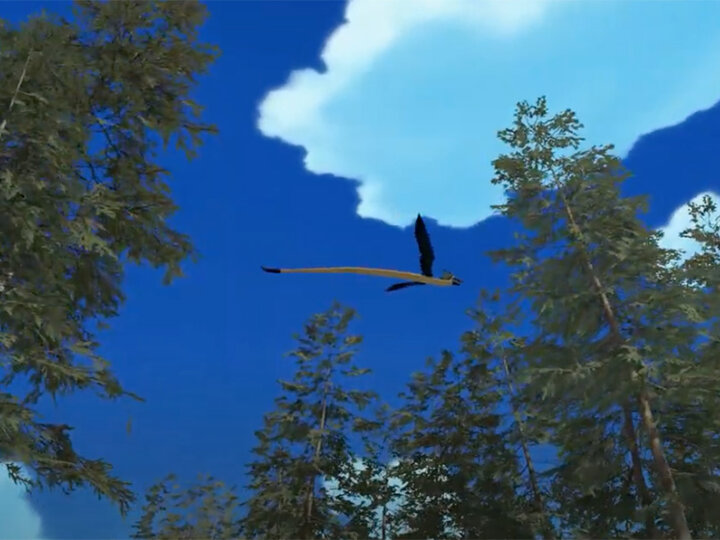
“Distortion in Recollection” by Noah Trumble
Using real VHS footage taken across my childhood, Distortion in Recollection attempts to capture the feeling of communicating your memories to other people. Sampling audio from these home videos as the audio element, I used techniques from Dr. Jinku Kim’s Spacial and Interactive Sound that taught us to use MAX/MSP to manipulate video and generate audio. I wanted to use CRT monitors for the displays, reminiscent of the TVs I used as a kid.
Dr. Jinku Kim’s “Spacial and Interactive Sound: course this year taught us how to use MAX/MSP to manipulate video and generate audio. I had never heard of these tools before taking this class, but learning about them—and experiencing Dr. Jinku Kim’s passion—has completely shifted my interest and focus in how I make art.
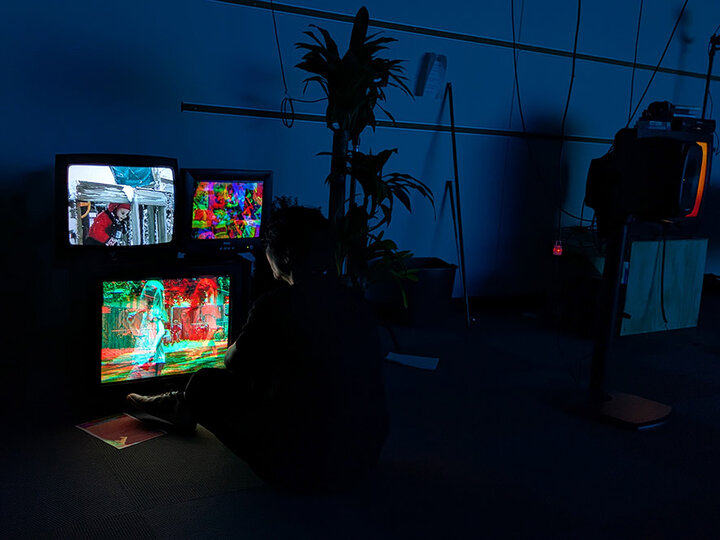
Performance by students from the inaugural Game Engines for Real-Time Performance course. Students in this course and Media Sound Design teamed up with dance students to create a live performance in motion capture using Unreal Engine 5.
Share your work, inspire others!
Submit your work to be featured on our student work page!
